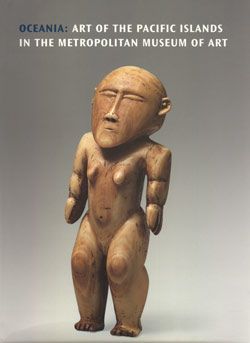Mask
Probably Timor-Leste (East Timor)
Not on view
The island of Timor gave rise to a distinctive tradition (or traditions) of dance masks whose precise origins and significance remain uncertain. What information exists suggests that many of the masks originated in Timor-Leste (East Timor). Portraying both male and female ancestors, they were worn by men during dances and other ceremonies, including celebrations of victory in war.
When in use, the masks were typically painted and adorned with strips of hide or bristles representing facial hair and worn with a headdress or a hood that covered the head, further concealing the dancer's identity. The present mask has no eye holes, and the wearer would have looked out through the mouth. Some masks were made from perishable materials, but wood examples such as this deeply patinated work were preserved and reused many times.
Due to rights restrictions, this image cannot be enlarged, viewed at full screen, or downloaded.



